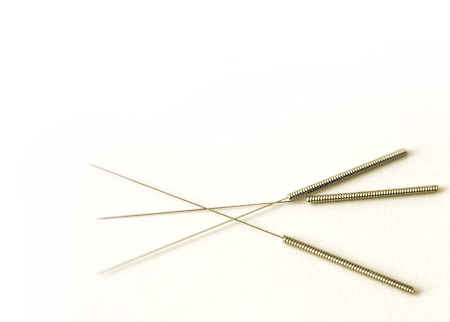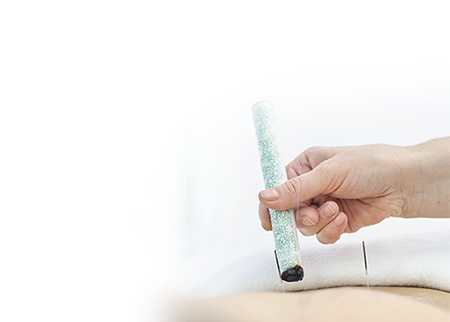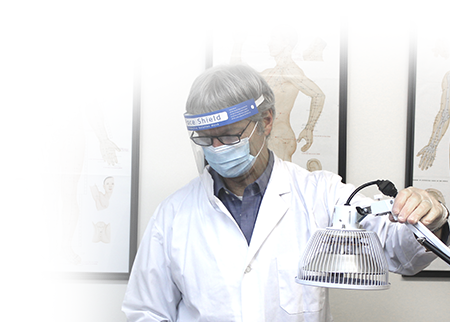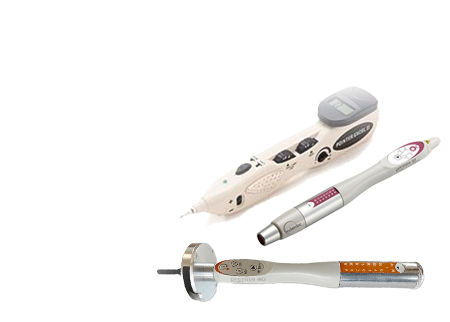Point Location Series: Non-Command Points
Explore the Non-Command Points in this 4-part series with Neil Gumenick. In each 1 hour course, Professor Gumenick will discuss best practices when it comes to identifying, locating, and treating exact points.

Series Overview
These 4 one-hour recorded webinars cover some of the most important and commonly used non-command points on the human body, including points on the REN and DU Channels, upper thoracic, abdominal region, the back, and points around the neck. Among the categories of points covered include Back Shu points, points of Entry and Exit, points on the Inner and Outer Bladder Lines, Kidney chest points, and Windows of the Sky.
Professor Neil Gumenick has been teaching point location to students for over 3 decades and has been in full-time practice since 1981. In this recorded webinar series, he will discuss how to best position the patient, how to identify appropriate physical landmarks, measuring distances, and finally locating, by palpation, the exact point. Power point photos of actual patients and anatomical diagrams will accompany Neil’s precise descriptions.
The four courses cover the following:
Course 1 covers the back, including selected points on the DU channel, inner and outer UB line
Course 2 covers the chest and abdomen, including selected points on the REN channel, Kidney, Stomach, and Spleen
Course 3 covers points of Entry and Exit
Course 4 covers Windows of the Sky points
Courses Included In This Series
-
CEUs: Approved By: IVAS (1), Florida (1), NCCAOM (1), Standard Certificate (1) Pending: California [Upon Request]*
-
Language: English
-
Course Type: Recorded Webinar
-
Course Length: 1h
-
Course Notes: Notes Are Provided With This Course.
-
Access Period: Lifetime
Point Location Series: Non-Command Points - Course 1
Neil Gumenick discusses the accuracy of point location. In Part 1 of 4 sessions, he covers the commonly used points on the back selecting points from the Du and UB meridian.
Course Overview
These 4 one-hour recorded webinars cover some of the most important and commonly used non-command points on the human body, including points on the REN and DU Channels, upper thoracic, abdominal region, the back, and points around the neck. Among the categories of points covered include Back Shu points, points of Entry and Exit, points on the Inner and Outer Bladder Lines, Kidney chest points, and Windows of the Sky.
Professor Neil Gumenick has been teaching point location to students for over 3 decades and has been in full-time practice since 1981. In this recorded webinar series, he will discuss how to best position the patient, how to identify appropriate physical landmarks, measuring distances, and finally locating, by palpation, the exact point. Power point photos of actual patients and anatomical diagrams will accompany Neil’s precise descriptions.
The four courses cover the following:
Course 1 covers the back, including selected points on the DU channel, inner and outer UB line
Course 2 covers the chest and abdomen, including selected points on the REN channel, Kidney, Stomach, and Spleen
Course 3 covers points of Entry and Exit
Course 4 covers Windows of the Sky points
-
CEUs: Approved By: Standard Certificate (1), Florida (1), NCCAOM (1), IVAS (1) Pending: California [Upon Request]*
-
Language: English
-
Course Type: Recorded Webinar
-
Course Length: 1h
-
Course Notes: Notes Are Provided With This Course.
-
Access Period: Lifetime
Point Location Series: Non-Command Points - Course 2
Neil Gumenick discusses the accuracy of point location. In Part 2 of 4 sessions, he covers the commonly used points on the chest and abdomen selecting points from the Ren, Kidney, Stomach, and Spleen meridian.
Course Overview
These 4 one-hour recorded webinars cover some of the most important and commonly used non-command points on the human body, including points on the REN and DU Channels, upper thoracic, abdominal region, the back, and points around the neck. Among the categories of points covered include Back Shu points, points of Entry and Exit, points on the Inner and Outer Bladder Lines, Kidney chest points, and Windows of the Sky.
Professor Neil Gumenick has been teaching point location to students for over 3 decades and has been in full-time practice since 1981. In this recorded webinar series, he will discuss how to best position the patient, how to identify appropriate physical landmarks, measuring distances, and finally locating, by palpation, the exact point. Power point photos of actual patients and anatomical diagrams will accompany Neil’s precise descriptions.
The four courses cover the following:
Course 1 covers the back, including selected points on the DU channel, inner and outer UB line
Course 2 covers the chest and abdomen, including selected points on the REN channel, Kidney, Stomach, and Spleen
Course 3 covers points of Entry and Exit
Course 4 covers Windows of the Sky points
-
CEUs: Approved By: Florida (1), NCCAOM (1), IVAS (1), Standard Certificate (1) Pending: California [Upon Request]*
-
Language: English
-
Course Type: Recorded Webinar
-
Course Length: 1h
-
Course Notes: Notes Are Provided With This Course.
-
Access Period: Lifetime
Point Location Series: Non-Command Points - Course 3
Neil Gumenick discusses the accuracy of point location. In Part 3 of 4 sessions, he covers the points of Entry and Exit.
Course Overview
These 4 one-hour recorded webinars cover some of the most important and commonly used non-command points on the human body, including points on the REN and DU Channels, upper thoracic, abdominal region, the back, and points around the neck. Among the categories of points covered include Back Shu points, points of Entry and Exit, points on the Inner and Outer Bladder Lines, Kidney chest points, and Windows of the Sky.
Professor Neil Gumenick has been teaching point location to students for over 3 decades and has been in full-time practice since 1981. In this recorded webinar series, he will discuss how to best position the patient, how to identify appropriate physical landmarks, measuring distances, and finally locating, by palpation, the exact point. Power point photos of actual patients and anatomical diagrams will accompany Neil’s precise descriptions.
The four courses cover the following:
Course 1 covers the back, including selected points on the DU channel, inner and outer UB line
Course 2 covers the chest and abdomen, including selected points on the REN channel, Kidney, Stomach, and Spleen
Course 3 covers points of Entry and Exit
Course 4 covers Windows of the Sky points
-
CEUs: Approved By: Florida (1), Standard Certificate (1), NCCAOM (1), IVAS (1) Pending: California [Upon Request]*
-
Language: English
-
Course Type: Recorded Webinar
-
Course Length: 1h
-
Course Notes: Notes Are Provided With This Course.
-
Access Period: Lifetime
Point Location Series: Non-Command Points - Course 4
Neil Gumenick discusses the accuracy of point location. In Part 4 of 4 sessions, he covers the Windows of Sky Points.
Course Overview
These 4 one-hour recorded webinars cover some of the most important and commonly used non-command points on the human body, including points on the REN and DU Channels, upper thoracic, abdominal region, the back, and points around the neck. Among the categories of points covered include Back Shu points, points of Entry and Exit, points on the Inner and Outer Bladder Lines, Kidney chest points, and Windows of the Sky.
Professor Neil Gumenick has been teaching point location to students for over 3 decades and has been in full-time practice since 1981. In this recorded webinar series, he will discuss how to best position the patient, how to identify appropriate physical landmarks, measuring distances, and finally locating, by palpation, the exact point. Power point photos of actual patients and anatomical diagrams will accompany Neil’s precise descriptions.
The four courses cover the following:
Course 1 covers the back, including selected points on the DU channel, inner and outer UB line
Course 2 covers the chest and abdomen, including selected points on the REN channel, Kidney, Stomach, and Spleen
Course 3 covers points of Entry and Exit
Course 4 covers Windows of the Sky points
Reviews
-
Janet B. (Canada)
I encourage Acupuncturists to locate and needle these points as suggested. I have had tremendous success and more importantly my clients have benefited
-
Julien H. (Norway)
Excellent course as always from Neil Gumenick. Very knowledgeable practitioner and teacher. Really worth your time to improve your point location skills.
-
William D. (Canada)
It was a great review on non command points.
Reviews
I encourage Acupuncturists to locate and needle these points as suggested. I have had tremendous success and more importantly my clients have benefited
Janet B. (Canada)
Excellent course as always from Neil Gumenick. Very knowledgeable practitioner and teacher. Really worth your time to improve your point location skills.
Julien H. (Norway)
It was a great review on non command points.
William D. (Canada)
With this class, I am drawn to knowing more about the points I do not tend to use.
Tess R. (United States)
Teacher
Neil Gumenick
In practice for 40 years, Professor Neil R. Gumenick, M.Ac. (UK), L.Ac., Dipl.Ac. is Founder and Chief Instructor of The Institute of Classical Five-Element Acupuncture. An accomplished author and international lecturer, he has taught at Yo San University, Emperor's College and SAMRA University.
Disclaimers
Please read these important disclaimers before purchasing:
...













